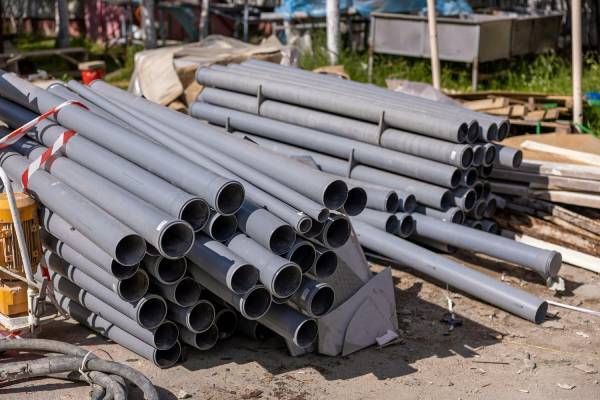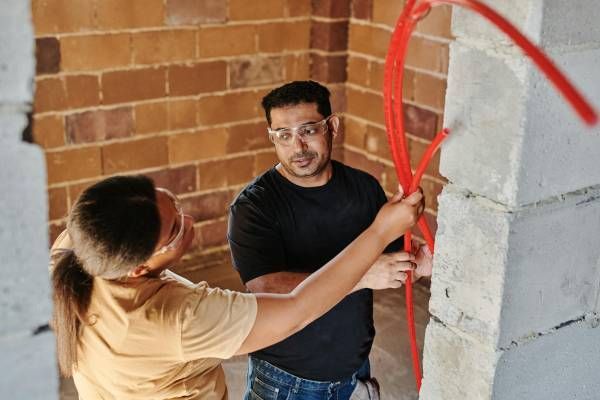Master Plumbers Blog
6 Types of Pipes Used in Home Plumbing and Their Pros and Cons
Pipes are a crucial part of your home’s plumbing system. They provide a path for clean water to reach various parts of your home and are also used to transport wastewater to the sewage system. However, not all plumbing pipes are the same. In fact, there are several types that can be used in a plumbing system depending on factors such as budget, durability, the temperature of the water that will pass through it, and environmental conditions.
If you’re not quite sure what type of pipe will work best for your home, you need the expertise of plumbers Dunedin residents can trust—just like Mains Plumbers. We have been providing quality plumbing services to home and small business owners alike in the Greater Otago region for decades, so you can count on our local knowledge and quality services. Whether you’re looking for emergency plumbing services, gas fitting, or drainlaying services, our team of experts is always ready to fix any plumbing woes you have in a timely manner.
With that in mind, we also believe that knowing which types of pipes are used in plumbing can help you make more informed decisions regarding your home’s plumbing needs. To that end, here are some common types of plumbing pipes, as well as their advantages and disadvantages.
1. PVC (Polyvinyl Chloride) Pipes
PVC pipes are lightweight yet durable pipes, making them easy to transport and install without requiring heavy equipment. Because of their smooth interior surface, these pipes minimise water flow resistance and reduce the likelihood of clogs. As such, PVC pipes are the ideal choice for your home's main water supply line. Another advantage of PVC pipes is that they're among the most affordable, making them a great choice for those on a budget.
A major disadvantage of PVC pipes, however, is that they’re limited to cold water applications. PVC can warp or degrade easily under high temperatures, which makes them unsuitable for hot water lines. PVC pipes can also be prone to cracking over time, particularly if they’re exposed to UV rays or freezing conditions.
2. CPVC (Chlorinated Polyvinyl Chloride) Pipes
CPVC pipes are essentially an upgrade of PVC pipes. Because CPVC pipes are treated with chlorine, they’re able to handle hot water, making them a versatile choice for both hot and cold water systems. In addition to being more durable and resistant to corrosion, CPVC pipes also tend to lose less heat. This makes them efficient for hot water applications.
One of the cons of CPVC pipes is that they tend to cost more than their PVC counterparts. They can also be brittle and crack if exposed to freezing temperatures. In addition, CPVC pipes may not be compatible with all plumbing materials and thus require consultation with your plumber first to ensure careful selection of fittings and adhesives.
3. Galvanised Steel Pipes
Once a popular choice among home plumbing systems, galvanised steel pipes are known for their durability. When you think of a plumbing pipe, the image you conjure in your mind is most likely a galvanised steel pipe. They are strong and effective for cold water lines and can be an affordable option for budget-conscious homeowners.
Over the years, galvanised steel pipes have been largely replaced in modern homes by newer materials such as CPVC. This is because galvanised steel pipes are heavy, making them more cumbersome to install. They can also be more prone to rust once their zinc coating wears off after years of use.
4. Copper Pipes
Copper pipes are a long-lasting, premium option for plumbing as they can handle high temperatures and pressures. They’re extremely durable and able to last for decades due to copper’s natural resistance against corrosion and microbial growth. This makes copper pipes ideal for transporting drinking water, as it keeps the water safe from contamination.
Do note that the premium qualities of copper pipes also come at a premium price. Copper pipes are also prone to bursting when frozen, so consider the placement of the pipe first before having these installed.
5. PEX (Cross-Linked Polyethylene) Pipes
PEX pipes are another popular choice for modern homes due to their flexibility, making them easy to install and ideal for tight spaces. They are highly durable, resistant to corrosion, and work well for both hot and cold water. Moreover, their flexibility allows them to expand slightly, which reduces the chances of the pipes bursting in freezing conditions.
However, PEX pipes can degrade if exposed directly to sunlight, which makes them limited to indoor use only. PEX pipes may also cost more upfront, although they do tend to be the more cost-effective choice over time.
6. Cast Iron Pipes
Known for their strength and longevity, cast iron pipes are typically used for drainage systems. They are also fire-resistant, thus adding a layer of safety to your plumbing system. The ability of cast iron pipes to minimise noise from water flow makes them ideal for multi-story homes, allowing multiple people to use the plumbing system without disrupting other residents.
A disadvantage of using cast iron pipes, however, is that they can be susceptible to rust and corrosion. Therefore, you’ll need to allocate time and resources for regular inspections and maintenance to ensure they’re always in good condition.
By understanding the pros and cons of these various types of pipes, you’re able to determine which ones would suit your plumbing requirements best. If you’re still unsure or would prefer to have an expert’s opinion on the matter, then don’t hesitate to contact Mains Plumbers so we can assist you right away.
All Rights Reserved | Mains Plumbers (2004) Ltd








